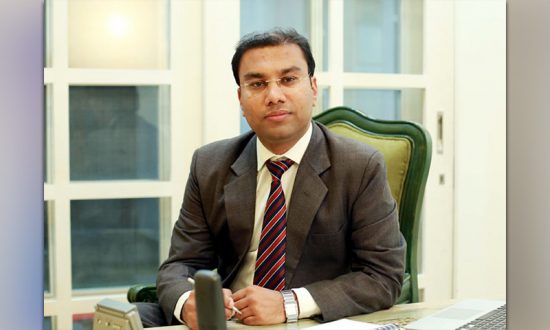Aman Mittal is the Vice President at Lovely Professional University (LPU), one of the leading educational institutes recognized globally for its innovative, collaborative, and consistent transformative approach. He is a multi-faceted personality spearheading various verticals such as International Education, Information Technology, Growth, Marketing, Public Relations, and Entrepreneurship along with overlooking the overall affairs at the university. Adding to it, he is also responsible for roles such as Program Design and Implementation, Team Development and Facilitation along with Crisis Management and Prevention as well as Communication Planning at the university.
A university is an institution that offers not only opportunities to pursue one’s dreams and build one’s career, but also to foster meaningful relationships and create unforgettable memories! This is the place where students are shaped holistically so as to prepare them for the future. They are also able to gather valuable learnings and life lessons; a significant one being- the concept of inclusivity and diversity!
Inclusion and diversity: The need of the hour
Diversity in simpler terms implies the campus’ perception as a positive environment for any student wanting to apply. Inclusion on the other hand refers to its welcoming approach for students coming with different interests and goals. Universities promoting these concepts stand out because they embrace students the way they are. While they gain recognition for being progressive; students are able to thrive with ease in an exponentially assorted place that supports these causes!
The Centre for American Progress, a public policy research and advocacy organization, highlighted via its various research reports, that the probability of racial diversity having a positive impact on the academic and social aspects of the students is quite high. This not only leads to academic excellence but also paves the way for students to foster long-lasting and meaningful relationships. According to the study by The Century Foundation, a progressive think tank firm, students interacting with racially and ethnically diverse peers show significant positive gains in cognitive skills such as critical thinking and problem-solving.
Universities effectively cultivating an inclusive and diverse culture
Meeting people from different parts of the world, living with them and connecting with them, students get to know about each other’s lifestyles and preferences. They also gather insights about the diversity in their cultures and traditions as well as get an opportunity of a lifetime to widen their horizons. Hence, universities are making concerted efforts to cultivate an inclusive and diverse campus culture through various ways-
Ensuring coexistence and harmony
In order to build a collaborative as well as an inclusive environment, universities ensure students from across the globe, from all walks of life, from both metropolitan cities and smaller towns coexist in harmony. This way diversity exists and is also promoted amongst the students.
Embracing unity and understanding
The universities propagate unity wherein students representing different states, countries, cities, or districts come together to celebrate each other’s festivals and share food, traditional practices as well as the history of their respective regions. The institutions are also encouraging their students to research and learn each other’s ethnic and cultural backgrounds to better understand the diversity and at the same time ensuring they respect and embrace that understanding.
Promoting equality
The universities encourage students to move beyond racial, religious, and cultural disparities. They teach students about equality. They propagate embracing talent and skills as well as putting an end to discrimination on the basis of any biases. They also motivate students to focus on excelling in their academic records basis their hard work and merits and not on the basis of ethnicity, race, majority, or privilege.
Equal opportunities for all
The institutions strive to provide high-end educational experiences along with other facilities such as sports, cultural activities, research and development, etc. for all. They ensure the elimination of regional, tribal, caste, or racial barriers. There is no favoritism or preferential treatment given and equality is promoted. Students across are also motivated to participate and work together as a team.
Student-friendly policies
Universities with their effective policies and efforts are aiming at bridging the gaps that exist. In order to avoid racial tensions, religious disparities, and cultural differences, they have created rules in the campus, and violation of any regulation can lead the student astray. They have strict policies and laws for the students who indulge in any discriminatory clash whether that can be caste slurs or religious tensions.
The universities along with stringent policies also ensure the environment is positive and nurturing so that negative emotions associated with molestation, harassment, biasedness, and discrimination do not arise. The fact that cultural diversity in the classroom exists significantly and is on the rise; there are no communication barriers for students. The students are all taught one common language so that they can communicate and connect.
The curriculum is also one of the effective ways to promote inclusiveness and equality. The universities ensure sharing of different viewpoints and perspectives along with the facts associated with discrimination, disparity, and biases with the students. This knowledge exchange happens through the faculty members leaves and leaves a long lasting impression since they are experts and come with an image of being credible and a reliable source of information.
Summing up!
Universities play a vital role in the overall development and behavioral wellness of a student. They build the students into professionals and transform them as an individual for life. The progressive times that we live in, universities need to be diverse and inclusive not only in terms of race but also gender, orientation, age, ethnicity, social class, national origin, caste, creed, etc. Understanding this very fact, they are making concerted efforts to build a nurturing and positive culture promoting diversity and inclusion on the campus!




